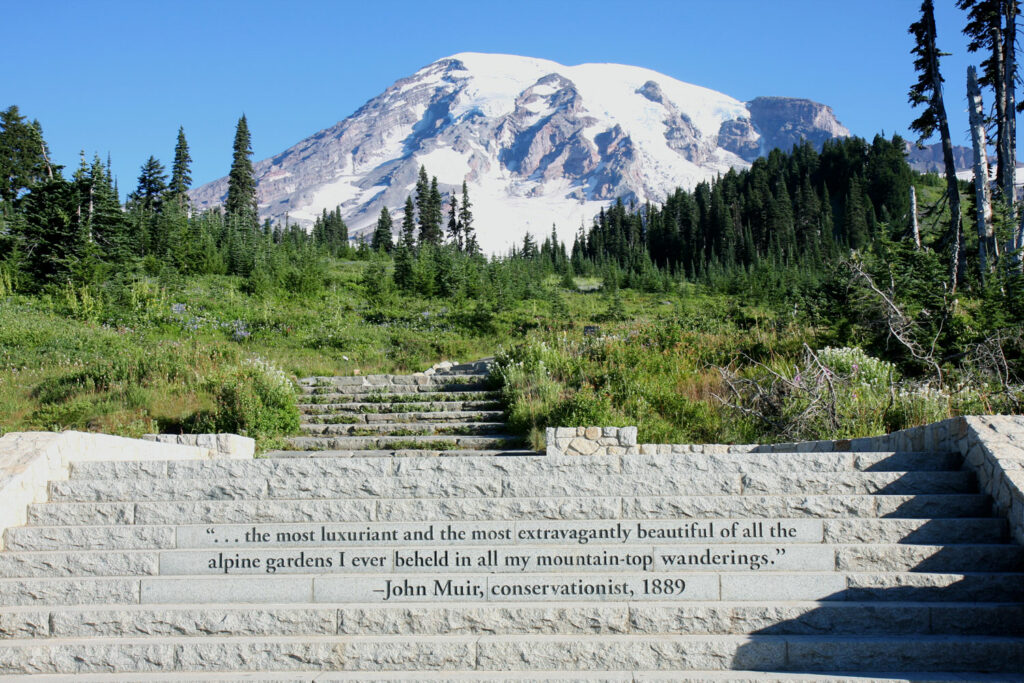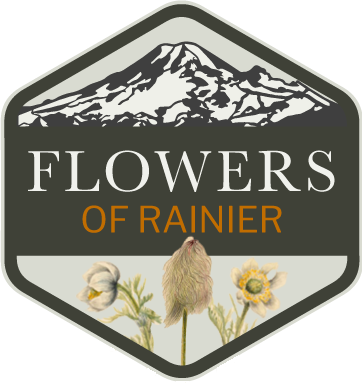In August of 1888 the famed naturalist John Muir had his first close encounter with Mount Rainier: “Out of the forest at last there stood the mountain, wholly unveiled, awful in bulk and majesty, filling all the view like a separate, newborn world, yet withal so fine and so beautiful it might well fire the dullest observer to desperate enthusiasm.”
Long he gazed in silent admiration, buried in tall daisies and anemones by the side of a snowbank. Later he expressed his delight at the full display of wildflowers stating “. . . the most luxuriant and the most extravagantly beautiful of all the alpine gardens I ever beheld in all my mountain-top wanderings.”

These words are now etched into the granite steps leading toward the mountain from the Paradise visitor center .
Years later in his book Our National Parks he elaborated further on the amazing relationship of the majestic mountain and its delicate splendid flowers: “Of all the fire-mountains which, like beacons, once blazed along the Pacific Coast, Mount Rainier is the noblest in form . . . its massive dome rises out of its forests, like a world by itself . . . the loveliest flowers . . . so closely planted and luxuriant that it seems as if Nature, glad to make an open space between woods so dense and ice so deep, were economizing the precious ground, and trying to see how many of her darlings she can get together in one mountain wreath. . .”
Muir had it right. Few other places afford such an alpine landscape that pronounces the splendor of such a lush and diverse flora posed before the majesty of such a mountain.
